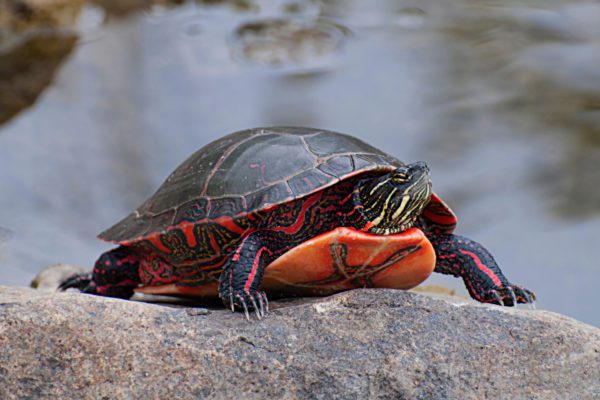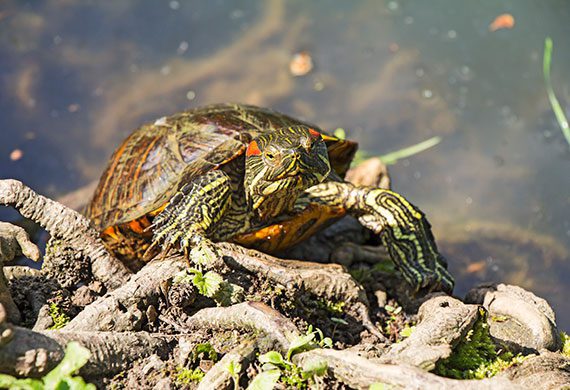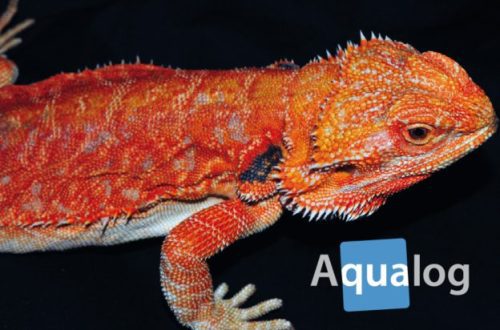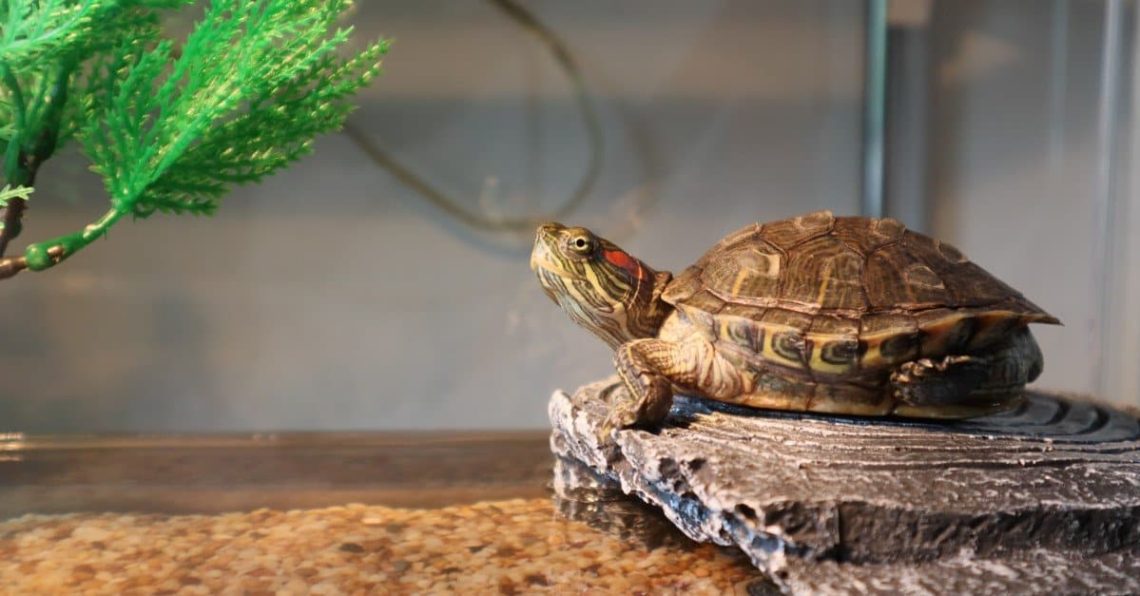
How many years do turtles live in nature and at home
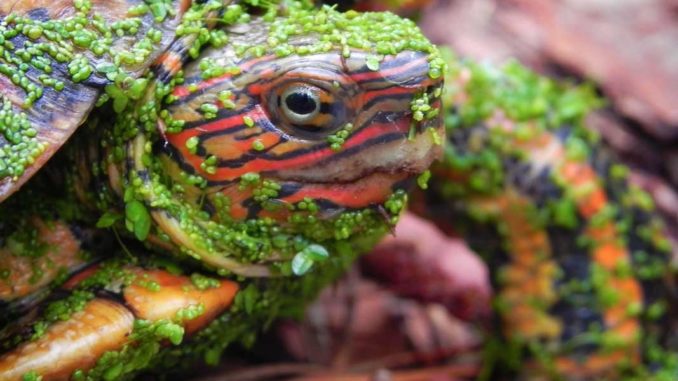
Turtles are famous for their longevity, so it is important for future owners to understand how long their pet can live at home.
We will figure out how many turtles of different species live and how to extend the life of a reptile living in captivity.
Contents
Lifespan and longevity factors
The average lifespan of a reptile depends on its size. Small turtles (about 10-14 cm) live less than representatives with larger parameters.
IMPORTANT! Many people think that turtles live longer in the wild than in captivity. This opinion is erroneous, since the life of a domestic turtle can be increased through proper maintenance and care.
On average, turtles live for about 50 years, but mistakes on the part of the owners can reduce the life expectancy of a pet to 15 years. The record maximum can be found only in large species.
The age of such individuals can reach 150 and even 200 years.
In order to understand why turtles live so long, it is important to consider 3 main factors:
- Size. The larger the body size of an animal, the lower the metabolic rate inside its body. Large turtles (more than 1 m) live longer, as they use less energy. Their wear and tear is minimal.
- Poikilothermia (cold-bloodedness). Metabolism is also involved here. The tortoise can outlive most warm-blooded ones because it does not have to expend its resources on a daily basis to maintain a certain temperature.
- Hibernation. The maximum slowdown of internal processes for 3-6 months each year allows you to save even more resources for a long life.
Average lifespan of different species
All types of turtles that exist in nature can be divided into 2 large groups:
- marine, living in the salt waters of the seas and oceans;
- ground, subdivided into:
- – land, living exclusively in land conditions;
- – freshwater, combining life in the reservoir and on the shore.
Let’s figure out how many years the most popular types of turtles live.
sea

Sea turtles live for about 80 years. They are distinguished by flipper-like legs, a more elongated shell and the lack of the ability to retract their limbs and head.
IMPORTANT! Most of the coasts used for laying eggs for centuries have been used as beaches. Due to human carelessness (pollution of the seas and oceans), reptiles were on the verge of extinction.

At home, marine reptiles are not kept, so you can see them only in the wild, in zoos or aquariums.
Land
Land turtles live in deserts, steppes and tropical rainforests. Some members of this family live longer than all other species and are considered centenarians. Depending on the subspecies, the average age of a turtle can reach 50-100 years.
At home, land turtles live for about 30-40 years, exceeding the life expectancy of waterfowl counterparts. This is due to the unpretentiousness of the family and simpler conditions of detention.
Central Asian
The most common turtle species, with a mottled yellow-brown shell, can live up to 50 years. In captivity, the average lifespan is reduced to 30 years.
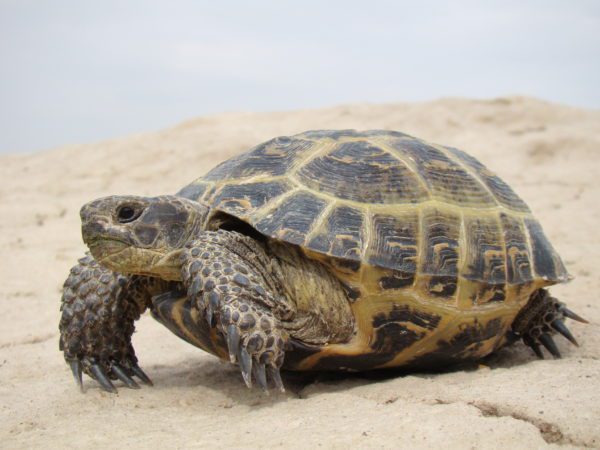
Desert
Desert western gophers live in the North American deserts and some southwestern states (Nevada, Utah). On average, desert tortoises live 50-80 years.
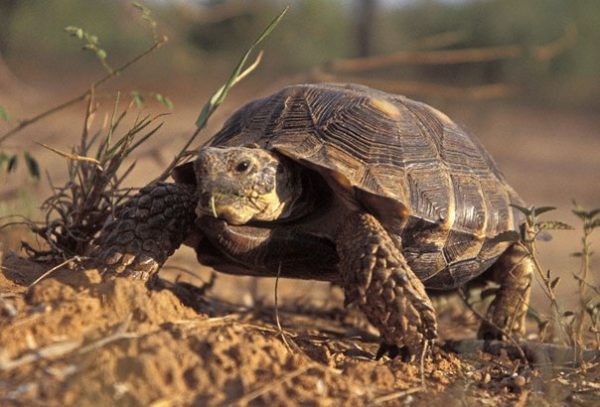
Giant
It is in this group, which is distinguished by impressive parameters, that long-lived turtles are found:
- Radiant. The maximum life span was recorded in Tui Malila tortoise. The turtle belonged to the leader of the island of Tonga and was donated by James Cook himself. Documents reflecting her exact age have not survived, but it is assumed that at the time of her death she was at least 192 years old.
IMPORTANT! The maximum age recorded in turtles exceeds that of other vertebrates.
American freshwater
The turtle family lives on the territory of 2 continents of America, Asia and Europe. Freshwater fish are small or medium in size, have a streamlined oval shell, sharp claws and a bright color.
Swamp green
Initially, the population of European marsh turtles was found only in Central Europe, but later began to appear in more eastern regions. The life expectancy of a reptile in the wild varies from place of residence:
- Europe – 50-55 years;
- Russia and the former CIS countries – 45 years.
With home maintenance, life expectancy is reduced to 25-30 years.
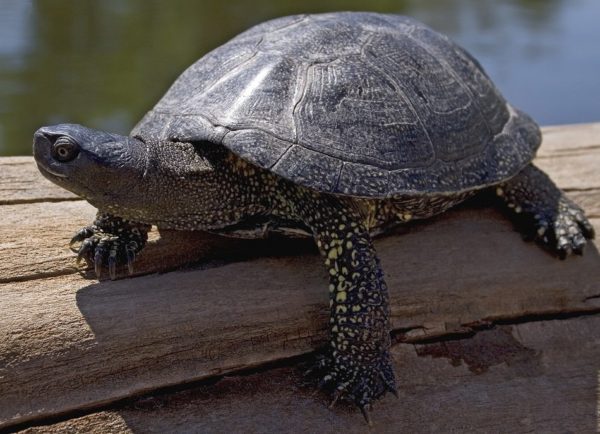
Painted
Turtles with interesting colors are very popular in the United States. If in nature their duration is about 55 years, then in captivity it is reduced to 15-25 years.
IMPORTANT! Oregon state law prohibits having painted turtles as pets.
red-eared
Another turtles that are popular in America. With proper care for the red-eared pet, you can extend its life up to 40 years.
IMPORTANT! In nature, no more than 1% survive to old age, and most die while in the egg or trying to get to the reservoir after hatching.
Asian freshwater
Asian freshwater live in the Middle East, in southern Africa and Asian countries (China, Vietnam, Japan).
On the territory of the former socialist countries, only one species can be found – the Caspian tortoise, which lives in natural ponds and lakes and artificial, reservoirs with river water supply.

The main condition for this species is the presence of running water.
Aquatic turtles are often kept at home, where they live for about 40 years.
Little water turtles
Small decorative turtles are easier to keep, so miniature representatives of Asian freshwater, reaching no more than 12-13 cm, live more often at home. These include:
Such decorative turtles live from 20 to 40 years, and the maximum life expectancy is observed in individuals living with humans.
Life cycle and relationship between tortoise and human age
The life cycle of a turtle can be divided into several stages:
- embryo. After successful mating, females make clutches of 6-10 eggs. Until hatching, which occurs in 2-5 months, no more than 60% of turtles survive. Sometimes nests are 95% ruined.
- Detstvo. Hatched baby turtles are independent, but vulnerable. Only 45-90% of young animals reach the nearest shelter.
- Maturity. At 5-7 years old, reptiles have their first mating, repeating the cycle from the very beginning.
- Mature age. After 10 years, turtles become adults. Their activity is reduced, the need for food decreases.
- Old age. Depending on the type and conditions of detention, old age occurs at 20-30 years. In some individuals, this age can be 40-50 years.
Correlating tortoise and human age is not easy, since too many factors are superimposed on the life expectancy of a reptile.
An approximate relationship can be calculated based on the average life expectancy and the age of physiological maturity.
The average life expectancy of different species can be found in the example table.
| A kind of turtle | Lifespan |
| Marine (carriages, ridleys, greens, hawksbill) | 80 |
| Land: | 150-200 |
| • Central Asian | 40-50; |
| • desert western gopher | 50-80; |
| • Galapagos (elephant) | 150-180; |
| • Seychelles (giant) | 150-180; |
| • elephant | 150; |
| • spur-bearing | 115; |
| • caiman | 150; |
| • box-shaped | 100; |
| • Balkan | 90-120; |
| • radiant | 85; |
| • stellate | 60-80. |
| American freshwater: | 40-50 |
| • marsh | 50; |
| • painted | 25-55; |
| • red-eared | 30-40; |
| • fringed | 40-75. |
| Asian freshwater (Caspian, spotted, Chinese three-keeled, closing, flat, Indian roofing). | 30-40. |
Factors affecting longevity
If in nature the main danger is borne by predators and climatic conditions, then with home maintenance, the life span depends on:
- Compliance with the basic conditions of detention. A cramped aquarium, too low or too high temperatures adversely affect the overall development and longevity of the turtle.
- Diet balance. A monotonous diet is fraught with beriberi and a lack of nutrients. Do not mix food intended for herbivorous and predatory reptiles.
- Risk of injury. A fall from a great height or a fight with a partner can turn into a tragedy for a pet.
- Timeliness of disease detection. The lack of preventive examinations and quarantine in new individuals can lead to mass infection.
longevity advice
Maximum life expectancy can be achieved by following these guidelines:
- Observe the temperature regime. Purchase special lamps that allow you to achieve the desired temperatures.
- Avoid monotony in the diet. The food should not only be balanced, but also suitable for a particular species.
- Make sure your pet has enough space. An adult should live in an aquarium with a volume of at least 100 liters.
- Don’t forget regular cleaning. Particularly noteworthy are aquatic species that feed and defecate in the water.
- Visit the vet 1-2 times a year. Early diagnosis will help avoid complications.
- Use vitamins. Mineral supplements and a UV lamp will help to avoid calcium deficiency.
- Try to prevent possible injuries. Do not put males in 1 aquarium and be sure to keep an eye on the pet walking outside the walls of your house.
Conclusion
Acquiring a turtle is an important step that imposes a great responsibility not only on the owner, but also on his family members. Some reptiles outlive their owners and pass them on to their children.
Before buying a new pet, talk to relatives to make a joint decision. Remember that land representatives can outlive not only you, but also your children.
Lifespan of turtles at home and in the wild
3.7 (73.33%) 6 votes



